Terrariums have been popping up all over the place, from design portfolios to home store catalogs. What’s the attraction? It’s simple: convenience and style.
Terrariums require little watering, take up little space and are generally easy to care for — even for the black-thumbed among us. And these tiny, lush vignettes create interest and liven up a space in a way few single houseplants can match.
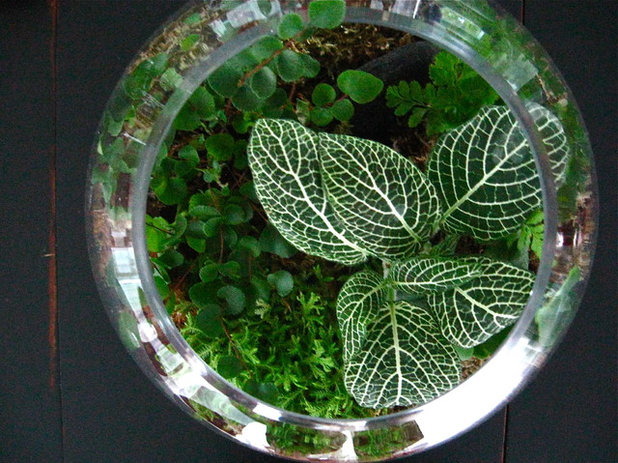
The Decorated Garden
Terrariums first gained popularity during the Victorian era after Nathanial Ward inadvertently grew grass in a glass enclosure. They enjoyed a revival in the 1970s, albeit commonly using clunky glass vessels and paired with macramé.
But terrariums today boast cleaner lines and a touch of whimsy. They come in many shapes, sizes and can either be open at the top or have a lid.
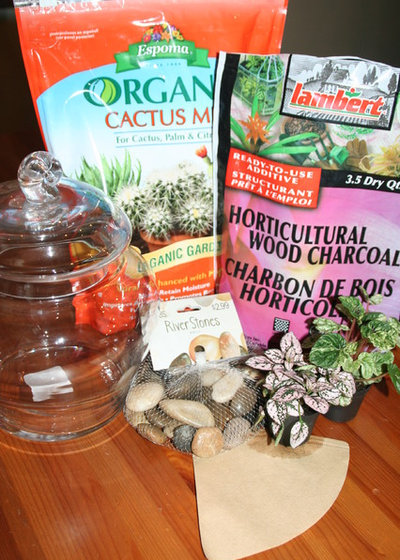
Kim Gamel
Putting together your own living terrarium is relatively easy. Here’s what you need:
• A clear glass vessel
• Decorative stones or river rock
• Horticultural charcoal (can be found at garden centers)
• A coffee filter or sphagnum moss
• Growing medium (soil used for growing cacti works well)
• Miniature plants and/or live moss
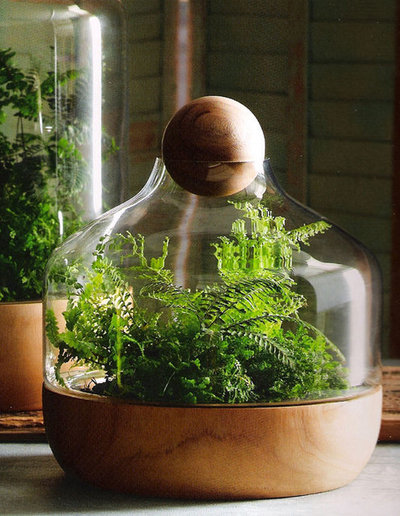
Pop Deluxe
Small Danish Terrarium - $169
When choosing your container, clear glass is a must to allow in light. Just about any shape will work, but it’s best to start with a vessel at least 6 inches tall to allow room for the soil and drainage layers.
And to make the process a little easier, you will want the top opening to be large enough to fit your hand.
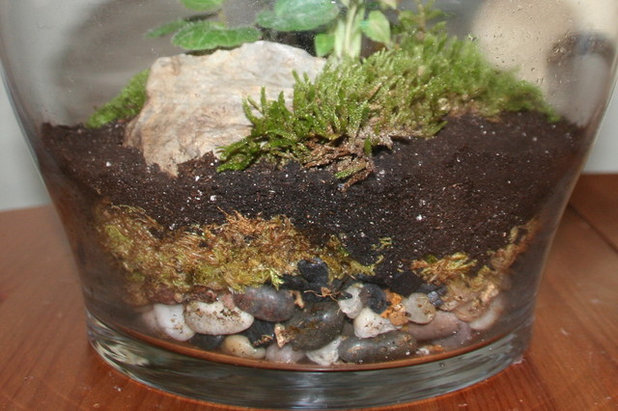
Kim Gamel
To start, gently add about 1 to 2 inches of rock at the base of your container. This will allow for drainage.
Add a light layer of the charcoal on top of the rock layer. The charcoal acts as a filter, preventing the moisture from becoming too stagnant.
To keep the soil from trickling down into the rocks, you'll need to add a barrier. You can use a coffee filter or sphagnum moss for this. Which one you use depends on your taste and the size of the jar (the moss will take up more space). If using a coffee filter, you may need to cut it to fit your container properly. If you use moss, use just enough to cover the charcoal below.
Once you have the barrier in place, add 3 to 4 inches of premoistened soil. You can fashion a funnel out of newspaper to direct the soil where you want it to go and keep it from dirtying the glass.
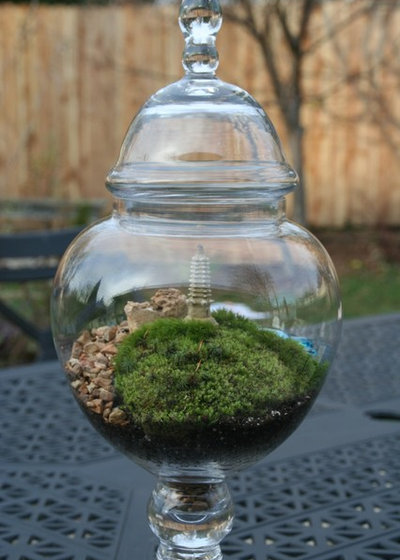
Kim Gamel
Now the fun part: adding the plants. Your selection will depend on whether the terrarium will be open or closed. Closed terrariums require humidity-loving plants. And because closed terrariums cannot be placed in direct or bright light (the plants will cook), you'd need to choose shade-loving plants. Good choices include:
• Strawberry begonia
• Ferns
• Live moss
• Baby’s tears
• Arrowhead plant
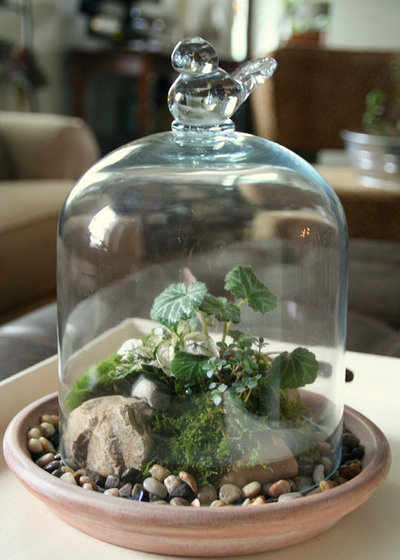
Kim Gamel
Be sure that whichever plant you use is free of insects. If you notice any bugs, eradicate them before putting them in the container. Your local garden center can tell you the best method for this.
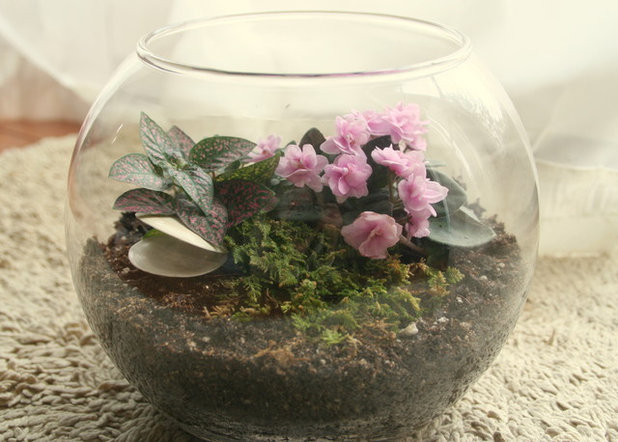
Kim Gamel
Open terrariums give you more options, because the plants can be placed in moderate to bright light and can take either moist or drier soil. Nearly all miniature forms of houseplants will work. Here are a few favorites:
• Succulents
• African violets
• Splash plant
• Waffle plant
• Earth stars
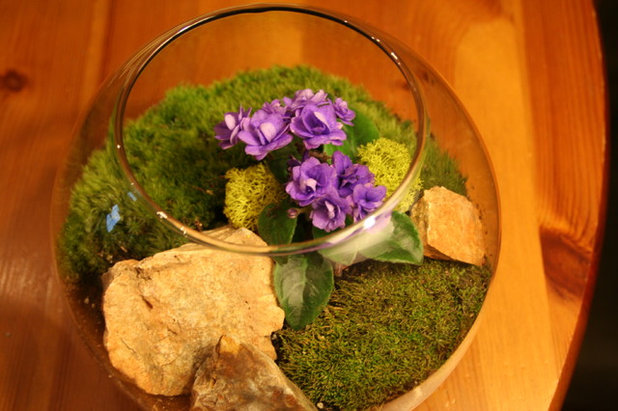
Kim Gamel
To install your plant, simply make a hole in your soil to accommodate the plant’s root ball and place the plant inside. It’s best to make sure no leaves touch the side of the glass, as this can cause the leaf to decompose. Depending on the size of your vessel, you may want to add more than one plant. However, a single specimen can act as a dramatic focal point. You may want to start with one and add more only if the scale of the container requires it.
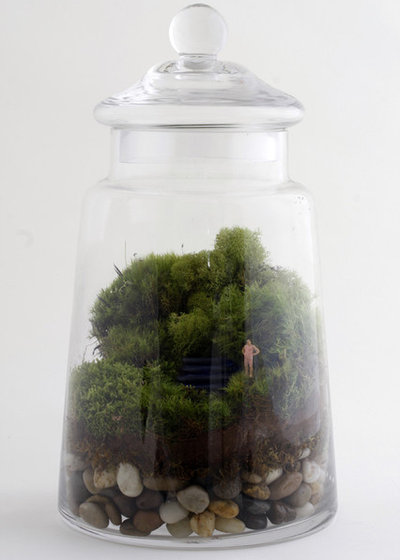
Twig.
Take a Dip Terrarium - $125
To give the terrarium a true landscape feel, you may want to add accents such as larger rocks to give the appearance of boulders. For a touch of whimsy, you can add miniature railroad figures and structures.
Once you’ve set your scene, you may either cover the soil with small pebbles or leave it in its natural state.
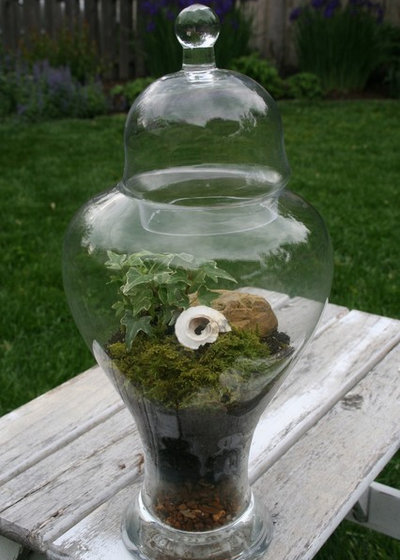
Kim Gamel
Closed terrariums require little care, as they form their own ecosystem over time. If the plants appear to droop and the soil seems dry to the touch, you can add water a little at a time. A turkey baster works well for this.
Once you see the water trickle down to the rocks on the bottom, stop watering. One of the easiest ways to kill plants in a terrarium is to overwater, so err on the side of dryness.
If the glass fogs or forms water droplets, the terrarium has built up excess moisture. This can be resolved by removing the lid for a few hours.
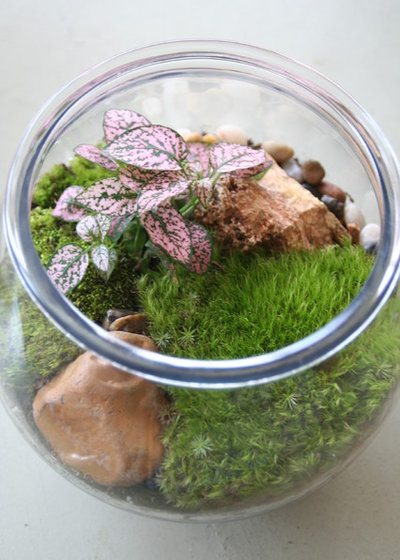
Kim Gamel
Open terrariums need as much care as any other houseplant, keeping in mind that these containers will not drain excess water, so again, less is more.
Whether the soil should be kept moist or dry will depend on the plant, so follow the rules of care on the plant’s tag. When watering, follow the same advice as with closed terrariums — add water a little at a time until you see the water running down to the rocks on the bottom, then stop.
Enjoy your new miniature garden and please share with us your photos of the finished product!
More:Creative ideas for terrariums
Ideas for modern houseplants





